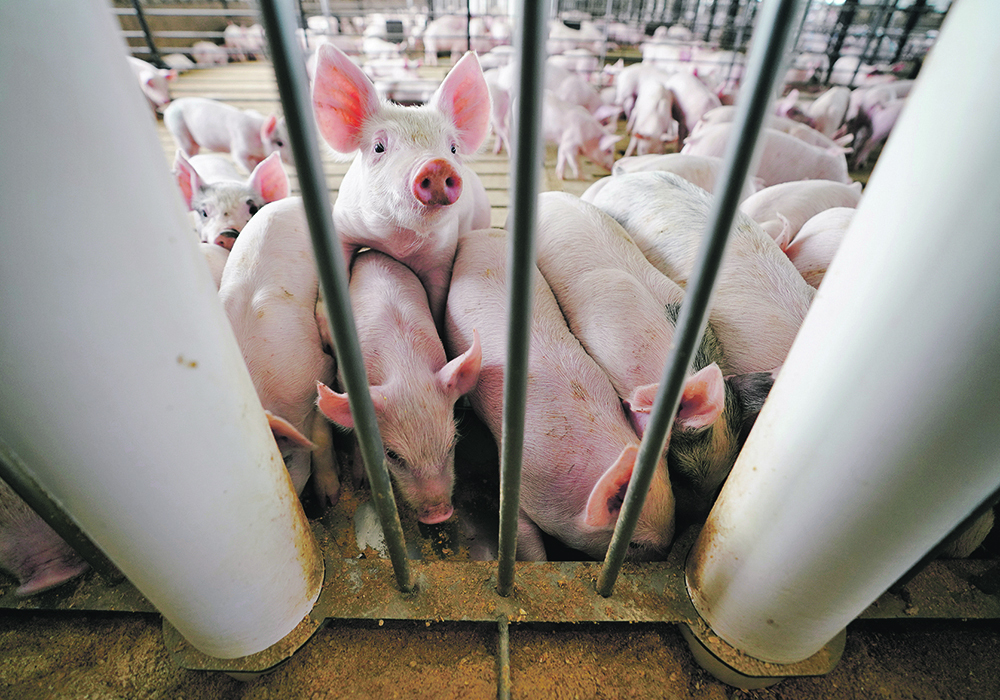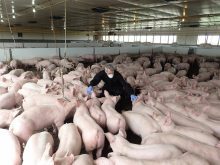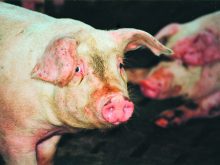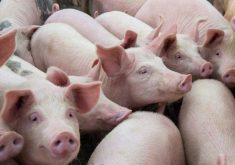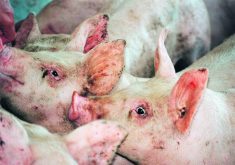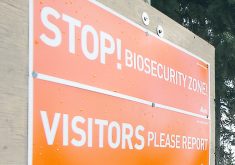Much has been learned about managing the risk of spreading animal diseases such as African swine fever through feed, says an associate professor in the feed science program at Kansas State University.
“There’s potential feed mill contamination of pathogens through people, trucks and ingredients,” Chad Paulk told participants at the recent Animal Nutrition Conference of Canada event in Saskatoon.
“Understanding the risk of those routes and how you can control or minimize that risk is key.”
Until recently, not much was known about how pathogens can be indirectly transmitted through animal feed and the speed at which they can spread.
Read Also

Animal protection delivery to change in Saskatchewan
The Saskatchewan government is looking for a new agency to handle animal welfare after Animal Protection Services of Saskatchewan decided not to renew its contract next year.
“I have to say, I’ve learned more about indirect transmission through the seven months I was at home during quarantine of COVID thinking about if I go to the restaurant and touch this, am I going to get sick or not?” he said.
“This becomes really interesting when we think about the feed manufacturing process and the system we’ve created, which is very efficient at delivering feed to multiple farms.”
This efficiency can exacerbate the speed of pathogens’ spread if feed is the vector because one feed mill may supply multiple farms and involve transportation back and forth. There are also multiple ingredient suppliers to that mill.
“We need to think about what we can control to prevent this from happening,” said Paulk.
Feed mills were not designed with biosecurity in mind and not all mills are the same, so biosecurity practices must be considered on a case-by-case basis, he noted.
Paulk’s analysis, including other research projects, identified several strategies for preventing disease transmission through feed mills.
“The data has shown us so far that people can move the virus, trucks can move the virus and it can survive in ingredients as well,” Paulk said.
- Ingredient sourcing: Ingredients from areas with disease outbreaks carry a greater risk. To identify that risk, knowledge of the ingredient supply chain should extend from the point of manufacture through transportation to the feed mill, including intermediaries or blending locations. Each step of the process should be tracked regardless of ingredient source.
- Trucks: The underside of trucks should be clean before the vehicles enter the receiving bay, which reduces the chance of debris entering the site. Use of pit covers while trucks are entering and leaving the receiving bay helps prevent debris from falling into the pit and contaminating ingredients. Sweeping spilled ingredients into the pit increases the risk of introducing disease to the mill. Truck drivers should not enter the mill beyond the receiving bay.
- People: Feed mill managers should focus on ways to separate the mill into zones and limit employee crossover between zones. This helps prevent employees from accidentally carrying contaminants through the mill.
Each zone needs its own set of tools, brooms and ladders to prevent these items from spreading contamination.
“Our goal is prevention of disease transmission from feed mills to pig farms. Extreme biosecurity measures happen to be effective in ASF positive countries, but you have to decide what’s your risk and what you’re going to do,” said Paulk, noting the value of sampling and surveillance to identify gaps in biosecurity.


